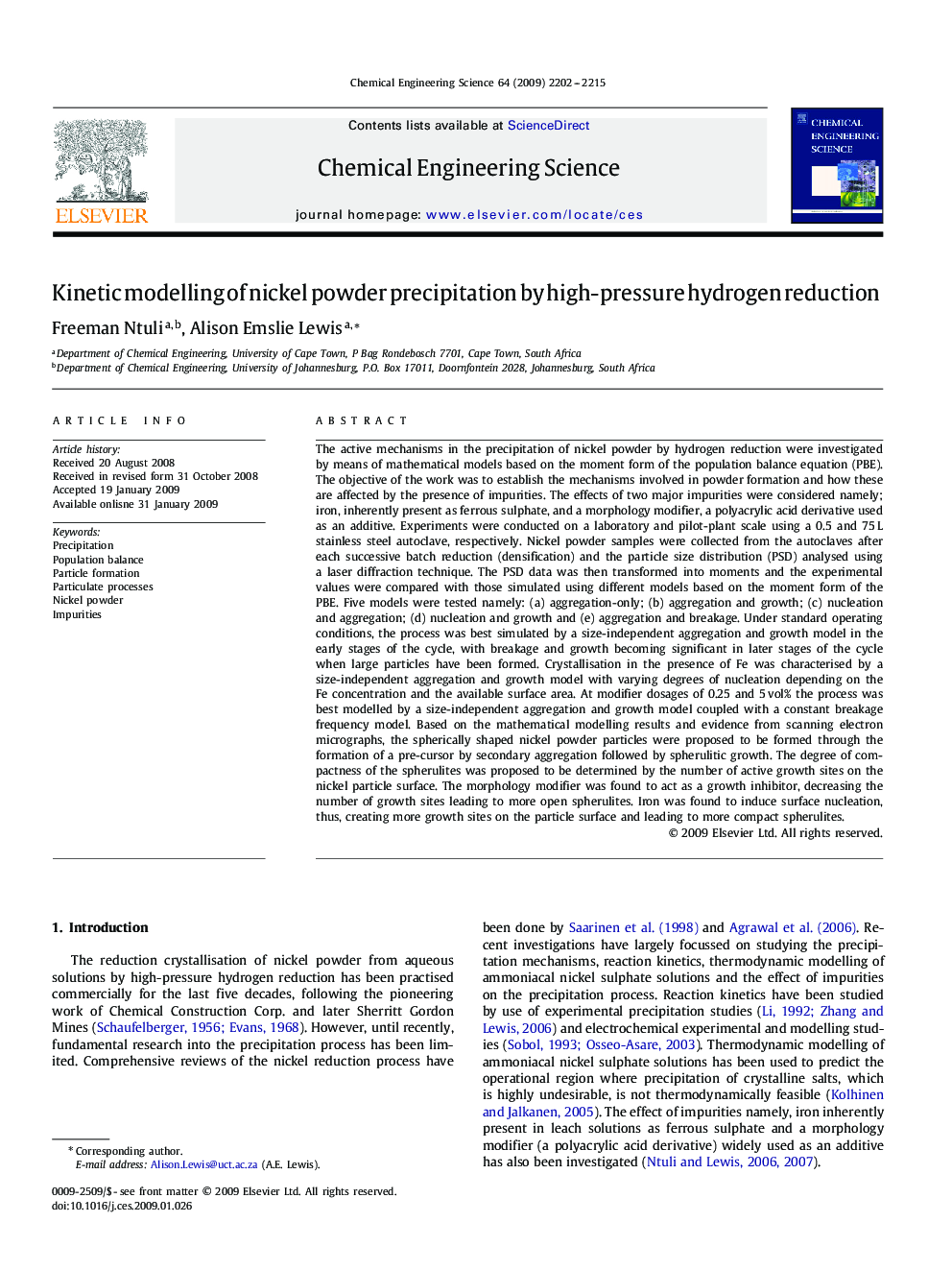| Article ID | Journal | Published Year | Pages | File Type |
|---|---|---|---|---|
| 157305 | Chemical Engineering Science | 2009 | 14 Pages |
The active mechanisms in the precipitation of nickel powder by hydrogen reduction were investigated by means of mathematical models based on the moment form of the population balance equation (PBE). The objective of the work was to establish the mechanisms involved in powder formation and how these are affected by the presence of impurities. The effects of two major impurities were considered namely; iron, inherently present as ferrous sulphate, and a morphology modifier, a polyacrylic acid derivative used as an additive. Experiments were conducted on a laboratory and pilot-plant scale using a 0.5 and 75 L stainless steel autoclave, respectively. Nickel powder samples were collected from the autoclaves after each successive batch reduction (densification) and the particle size distribution (PSD) analysed using a laser diffraction technique. The PSD data was then transformed into moments and the experimental values were compared with those simulated using different models based on the moment form of the PBE. Five models were tested namely: (a) aggregation-only; (b) aggregation and growth; (c) nucleation and aggregation; (d) nucleation and growth and (e) aggregation and breakage. Under standard operating conditions, the process was best simulated by a size-independent aggregation and growth model in the early stages of the cycle, with breakage and growth becoming significant in later stages of the cycle when large particles have been formed. Crystallisation in the presence of Fe was characterised by a size-independent aggregation and growth model with varying degrees of nucleation depending on the Fe concentration and the available surface area. At modifier dosages of 0.25 and 5 vol% the process was best modelled by a size-independent aggregation and growth model coupled with a constant breakage frequency model. Based on the mathematical modelling results and evidence from scanning electron micrographs, the spherically shaped nickel powder particles were proposed to be formed through the formation of a pre-cursor by secondary aggregation followed by spherulitic growth. The degree of compactness of the spherulites was proposed to be determined by the number of active growth sites on the nickel particle surface. The morphology modifier was found to act as a growth inhibitor, decreasing the number of growth sites leading to more open spherulites. Iron was found to induce surface nucleation, thus, creating more growth sites on the particle surface and leading to more compact spherulites.
